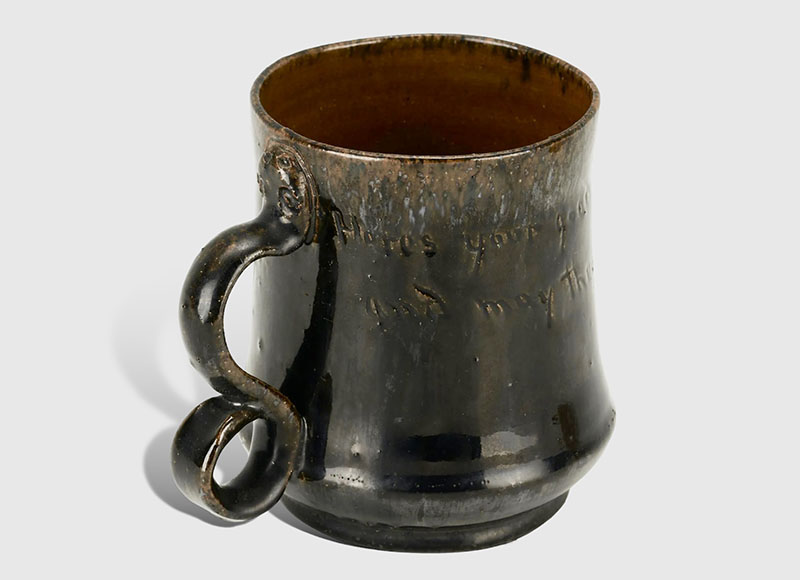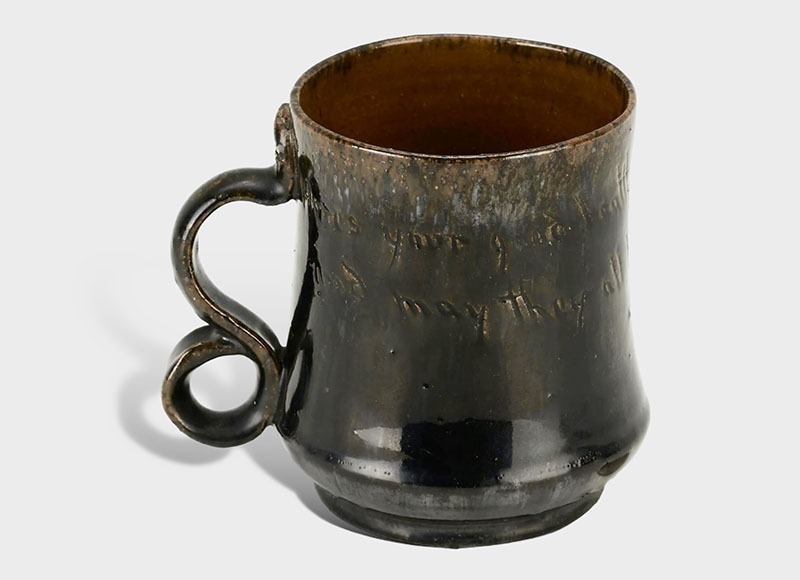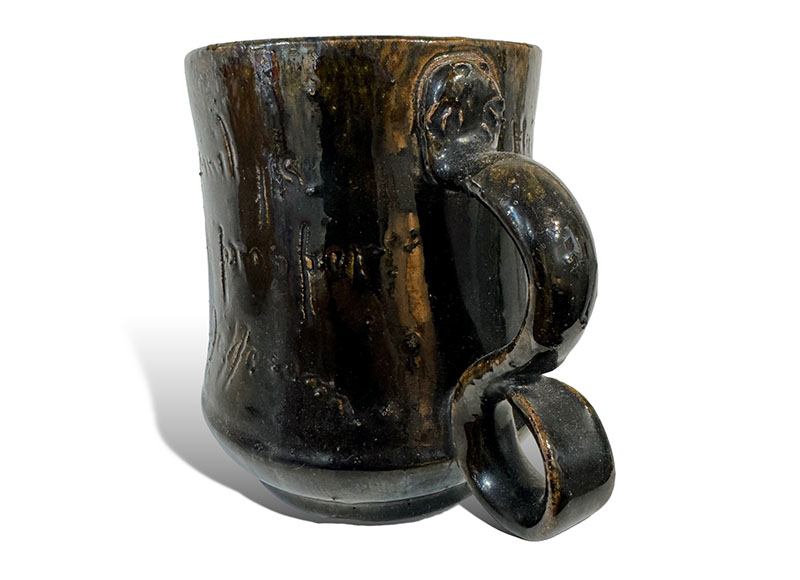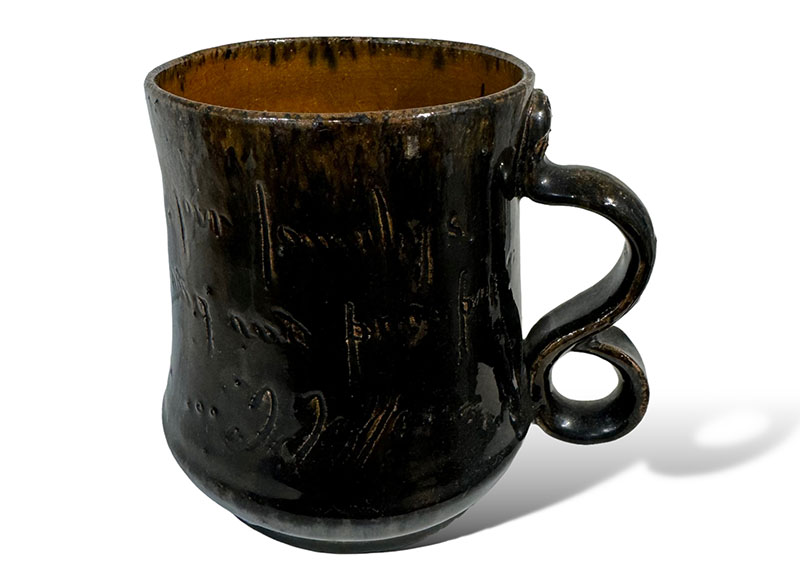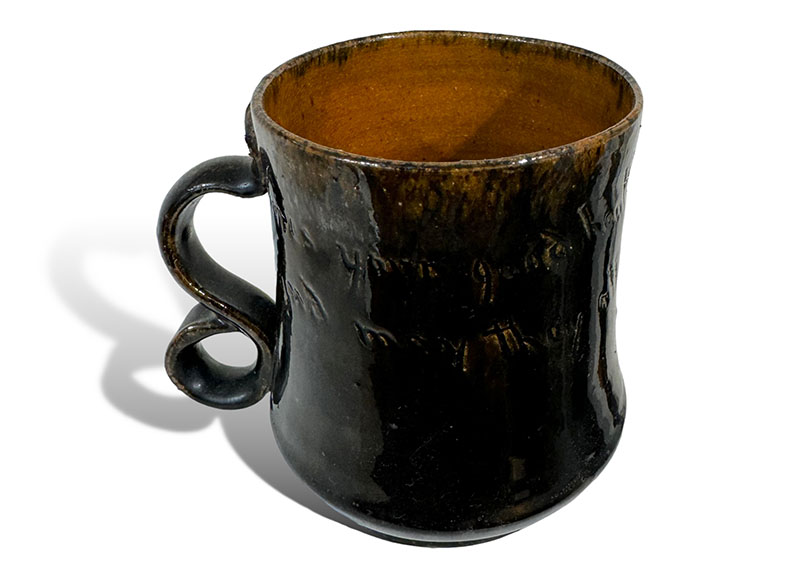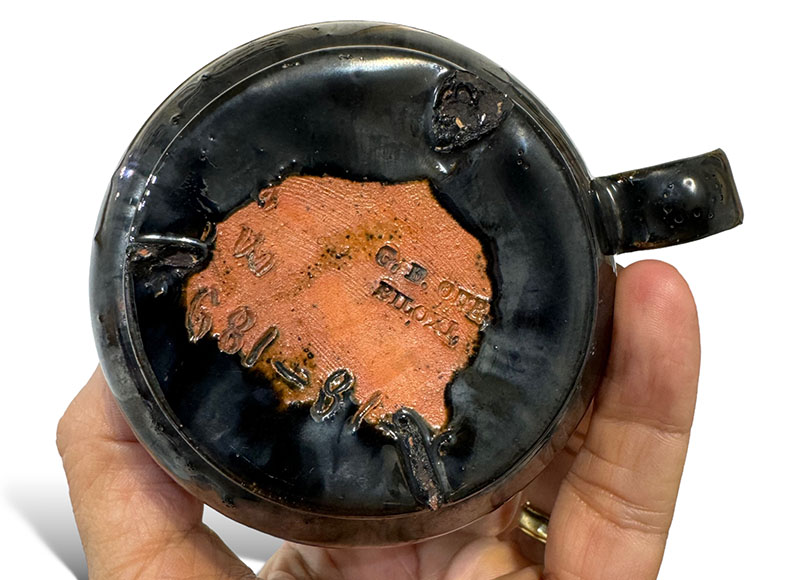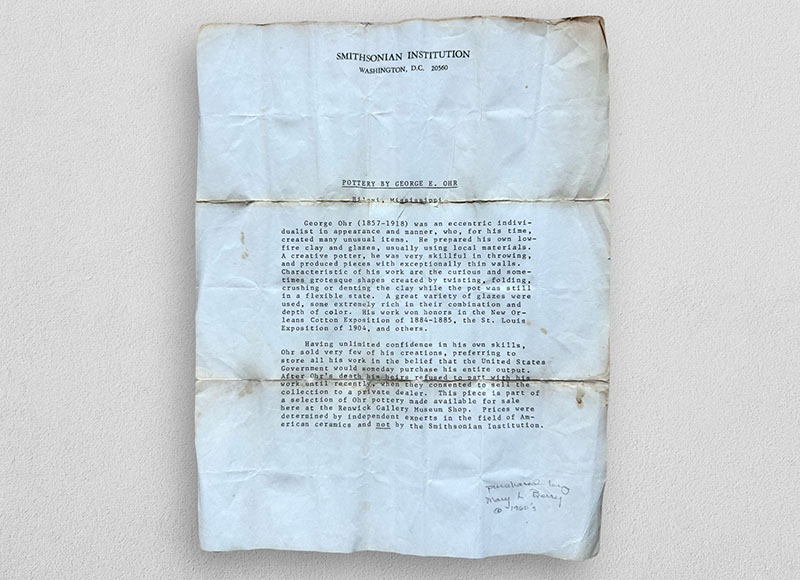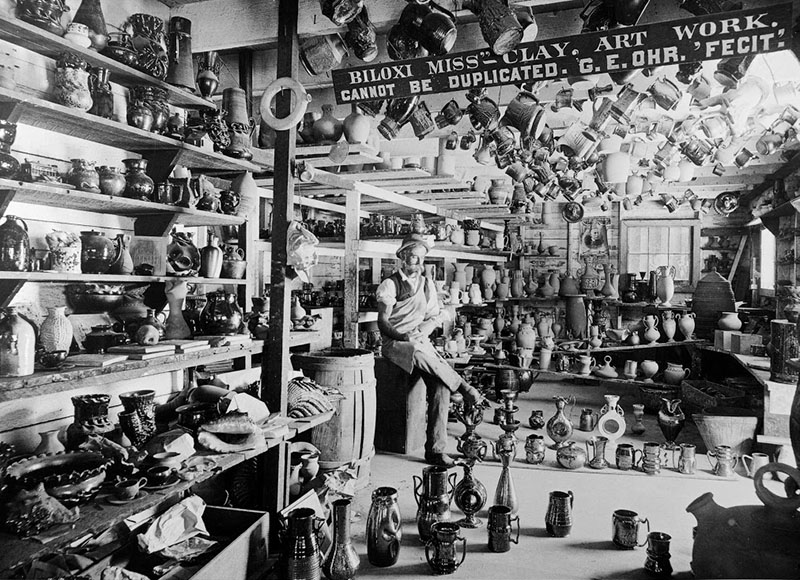- HOME
- INVENTORY
- GALLERY
- BOOKS
- CATALOGS
- ABOUT & MORE
- CONTACT
Contact Us
George Ohr (American 1857-1918) | Jefferson Snake Mug
Impressed signature to underside 'G. E. OHR, BILOXI' with incised date and number “3-18-1896” (partially obscured from glaze).
Glazed earthenware
Circa: 1896
Size: 3 3/4" x 4" | 9.5 x 10.2 cm
A fascinating George Ohr piece, for a couple of reasons. The first is that this mug was sold at The Renwick Gallery at The Smithsonian Museum in 1973. 1973 was the first year James Carpenter (the dealer that bought the entire Ohr Cache and brought Ohr to the world) and in additional to having 10 select pieces on exhibit at the Renwick Gallery, the museum allowed Carpenter to sell a number of works directly from the mueum's gift shop—this was purchased then. It is accompanied with the original "artist bio" produced by The Smithsonian (this is the only copy of this letter that I have seen documented)!
The second reason is that this is a "Jefferson" mug (Ohr creating a small number of pieces commemorating a visit by the then well known stage actor, Joseph Jefferson) and it features the incised script, “Here's to your good health and your family's and may they all live long and prosper.”
I know you are thinking #LLAP 🖖 or “Live long and prosper” undoubtedly had its origins with the 1960s tv show, Star Trek right? Not so fast.Let’s get to the bottom of this. Writer, Theodore Sturgeon introduced the lines in the 1967 Star Trek episode, “Amok Time” and since has been inextricably tied to the series. However, this mug was created by George Ohr in March 1896!
So what’s the origin? Variations of it have existed from ancient Egypt ("life, prosperity and health") and the Bible (“live and prosper.”) And Shakespeare wrote in Romeo & Juliet, “Live and be prosperous…." But it was George du Maurier, from the book “Trilby,” who wrote of an art student, "May he live long and prosper!" The story was published Harper’s in 1894 and as a book in 1895 and was wildly popular. (As an aside, the book also introduced us to Svengali).
George Ohr made the mugs the following year in commemoration of a visit by the then famous stage actor, Joseph Jefferson.
So that’s that! May we all live love and prosper🖖!
Ohr, widely known as the "Mad Potter of Biloxi," was a remarkable artist whose innovative pottery approach challenged his time's conventions. His journey as an artist eventually led him to become the most influential figure in American ceramics. Ohr's artistic legacy extends far beyond his pottery—his daring and unorthodox approach to art continues to inspire contemporary artists.
Provenance: Renwick Gallery of the Smithsonian American Art Museum, 1973 with original “George Ohr” bio from the purchase.
Condition: Excellent.
Price: SOLD

ALL ITEMS GUARANTEED AS REPRESENTED
STEVEN S. POWERS • 53 STANTON ST, NY, NY 10002 • 917-518-0809 • email: steve@stevenspowers.com • © all rights reserved

